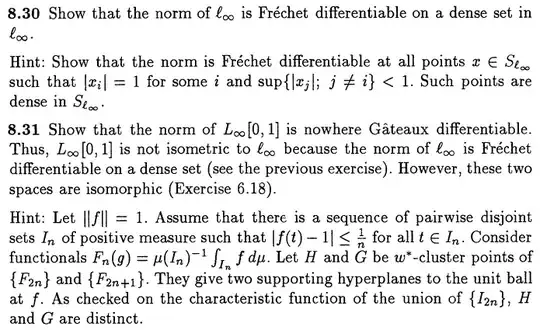It is known that there exist some isomorphism between $L_\infty$ and $\ell_\infty$, which is not explicit at all.
Could someone tell me whether there exist an isometric isomorphism between $L_\infty$ and $\ell_\infty$?
It is known that there exist some isomorphism between $L_\infty$ and $\ell_\infty$, which is not explicit at all.
Could someone tell me whether there exist an isometric isomorphism between $L_\infty$ and $\ell_\infty$?
They aren't isometric.
We have $\ell_\infty = C(K)$ and $L_\infty = C(L)$ for $K = \beta \mathbb N$ and $L$ the Stone space of the Lebesgue algebra on $[0,1]$. By the Banach-Stone theorem an isometry would involve a homeomorphism between $K$ and $L$. Such a homeomorphism can't exist: For example, $K = \beta\mathbb{N}$ is separable while $L$ isn't separable, being the Stone space of an atomless probability algebra. In fact, every countable subset of $L$ is nowhere dense.
A more explicit and probably more elementary approach is outlined in these two exercises from page 268 in M. Fabian, P. Habala et al. Functional Analysis and Infinite-Dimensional Geometry, Springer 2001, depending on recognizing points of differentiability of the norms:
